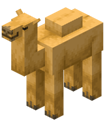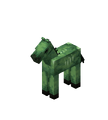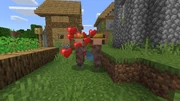
Two villagers breeding.

A wolf pup with its parents.
Breeding is a game mechanic that allows certain mobs, including villagers and many animals, to produce offspring.
Some mobs have similar mechanics that are not classified as breeding.
Mechanics[]
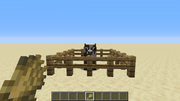
A cow following the player.
Most animals that can be bred have a food item used to lead and breed it (there are a few special cases, described below). Once an animal notices a player holding its food, it follows the player until either the player is out of range, the player stops holding the item, it begins the breeding process, or it is attacked. Baby animals behave the same way. Most animals are uninterested in food lying on the ground, and those that are do not breed from eating this food; animals breed only when fed by a player. One item per parent is needed to breed a single baby.
Love mode[]
When an animal is fed its food, it enters "love mode", preparing to breed with another animal of the same species that is also in love mode. Animals that are in love mode emit heart particles constantly. When both animals are fed, they pathfind toward each other, up to eight blocks away. The two animals walk into each other for about two and a half seconds, and then drop 1–7 and end love mode to produce their offspring, the method of which depends on the animal. Most animals immediately spawn a baby animal at the feet of the parents, usually of the same species as their parents, with the exception of mules, which cannot breed with each other and must be bred via the union of a horse and donkey. Some animals lay eggs, but the method and location they perform this varies from animal to animal. Chickens are the only animals that can both directly produce babies and lay eggs, as well as the only animals that lay eggs without being fed. After breeding, the parents cannot be fed to breed again for five minutes, but they (and their babies) always follow players holding breeding items. An animal exits love mode if it does not breed 30 seconds after being fed, but it immediately becomes able to be fed and enter love mode again.
The number of animals that are produced starting from a single pair of animals, assuming the offspring is fully grown before breeding again, is represented by this sequence:
where is the floor function.
The th term of the sequence can also be computed with this formula: where and is the ceiling function. The constant is defined to be (see OEIS A083286)
Breeding foods[]
| Mob | Items | Other | ||||
|---|---|---|---|---|---|---|
| These mobs must be tamed by repeatedly mounting them before they can breed. They can be tamed faster by being fed.
A horse breeding with a donkey produces a mule. Mules cannot breed. The following items cannot be used for leading or breeding, but can be used to feed an untamed horse, donkey, or mule, grow a baby, or for healing: | ||||||
| Sheep can grow faster if they eat grass or grass blocks. They cannot be hand-fed these items; they eat them only if they are placed in the world. | ||||||
| Pig | Pigs can also be led, but not bred, with a carrot on a stick. | |||||
| Chicken | Chickens directly produce a chick when bred. They also automatically produce eggs, and do so without having to be fed. | |||||
| Wolf (Tamed) |
|
These mobs must be tamed by being given enough bones before they can be fed anything else, and do not enter love mode from eating bones.
Tamed wolves can be fed to restore health, and must be at full health to enter love mode. In Bedrock Edition, the following can also be used for healing, but cannot be used for breeding or growing a baby wolf: | ||||
| Cats must be tamed by being given enough food before they can breed.
Tamed cats can be fed to restore health, and must be at full health to enter love mode. When fed, ocelots trust the player that fed them, and do not run away. An ocelot does not need to be trusting to breed. | ||||||
| Axolotl | Only bucketed tropical fish can be used to breed axolotls. Tropical fish items cannot be used.
A water bucket is returned upon feeding. | |||||
| Llamas must be tamed by repeatedly mounting them before they can breed. They can be tamed faster by being fed.
Llamas and trader llamas can crossbreed, and the offspring is always a normal llama.[needs testing] Wheat can also be used to feed an untamed llama, grow a baby, or for healing, but it cannot be used to lead or breed llamas. | ||||||
| Rabbit | Rabbits always run from players unless they hold a breeding item, even if they are fed or grown from a baby by a player. | |||||
| Turtle | Turtles lay eggs on sand when bred that take a few days to hatch into baby turtles. They lay eggs only at the place they spawned or were hatched. Turtle eggs can be obtained only with Silk Touch, hatch only when placed on sand, and hatch significantly faster at night. Turtle eggs can be trampled and broken, and zombies and their variants do so deliberately. | |||||
| Panda | Pandas can eat bamboo and other food items without player input, but breed only when fed by a player.
Pandas breed only if there are at least eight bamboo plants placed in a radius of five blocks around them. | |||||
| Fox | Foxes can eat berries and other food items without player input, but breed only when fed by a player.
The baby fox always trusts the player that bred the foxes, even when it grows up, and does not run away when approached. | |||||
| Bee | All flowers and flowering blocks work. Feeding bees wither roses does not give them the Wither effect or anger them. | |||||
| Strider | Striders can also be led, but not bred, with a warped fungus on a stick. | |||||
| Hoglin | Hoglins continue to attack during the breeding process. Hoglins that are fleeing from warped fungi, nether portals or respawn anchors cannot be bred.
Zoglins cannot breed. | |||||
| Frog | Frogs lay eggs on water that take ten minutes to hatch into tadpoles. These eggs cannot be obtained in item form or moved. | |||||
| Camel | Despite being fed cacti to breed (and not taking damage from it), camels still take damage from touching it when it is placed in the world. | |||||
| Sniffer | Sniffers lay eggs when bred that take twenty minutes (or ten, if the egg is placed on a moss block) to hatch into a snifflet. They lay their eggs in item form, and they must be placed by a player. |
Villagers[]
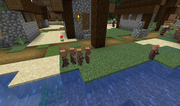
A group of villager children playing tag.
Villagers do not breed automatically when given food. Villager breeding depends on both the number of valid beds in the area (see the village page for full details), as well as whether the villagers are "willing." A villager may become willing if they have 3 bread, 12 carrots, 12 potatoes, or 12 beetroots in their inventory. They may also become willing as a result of trading with a player. When they breed, they produce a smaller villager. Unlike many baby animals, baby villagers do not have big heads in Java Edition. Zombie villagers and wandering traders cannot breed, and baby zombie villagers do not grow up.
Baby mobs[]
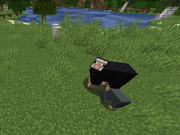
An example of how a bred sheep inherits a mixture of its parents' colors when possible.
Baby mobs are smaller variations of their adult counterparts, having small bodies, relatively big heads (with some exceptions), and faster walking speeds. Their sounds are the same as their adult variants but 50% faster and are pitched up by 6 semitones. The only exception to this is tadpoles, which are a wholly unique mob from from frogs. Many baby mobs have different interactions or behavior compared to their elders that depends on the mob. For example, lambs cannot be sheared for their wool, calves, mooshroom calves and kids (baby goats) cannot be milked, and baby piglins take gold but do not barter. Most baby mobs do not drop loot or experience when killed, with the exception of items they pick up. Baby mobs that do drop loot or experience consist of the following:
- Baby zombies, zombie villagers, husks, drowned, zombified piglins and zoglins (both loot and experience)
- Baby hoglins (only experience)
- Baby piglins (only experience, but less than adults)
Most baby animals choose and follow an adult within 8 blocks of the same species, regardless of whether it is their parent. Babies can choose new targets to follow whenever they do not have a valid target, such as when the previous target dies or moves further than 16 blocks away. Tamed pups and kittens follow their owner if the parent is absent or sitting. Baby animals that do not follow adults consist of:
- Tadpoles (which do not follow frogs)
- Snifflets[1]
- Baby rabbits[Java Edition only][2]
- Baby turtles [Java Edition only][3]
- Ocelot kittens[Java Edition only][3]
- Stray kittens[Java Edition only][3]
- Wild wolf pups[Java Edition only][3]
Baby mobs that are not animals never follow adult mobs.
When a baby of a species with different fur/pattern variants is born, they usually inherit the pattern of one of their parents, chosen at random, with some exceptions:
- In the case of sheep, if the parents have "compatible" colors (meaning that their corresponding dye items could be combined into a third dye), the lamb inherits a mix of the parents' colors[Java Edition only].
- In the case of mooshrooms, breeding two of the same variant has a 1⁄1024 chance to spawn a mooshroom of the opposite variant. Breeding two mooshrooms of differing variants has an equal chance of a baby mooshroom of either type.
- In the case of horses, there is a 13⁄45 chance of having a random color/markings instead of matching either of its parents.
- In the case of axolotls, a baby axolotl bred by a player (not found in the world) has a 1⁄1200 chance to be the rare blue variant, with this being the only way to obtain this variant. Otherwise, it inherits the color of one of its parents at random.
- Frogs do not inherit their variants from their parents. A frog's variant is determined by the biome it matures from a tadpole in.
Baby animals can be manually spawned by using spawn eggs on a grown animal. This also works on zombies or variants. Baby animals may also be spawned using the /summon command with a negative Age tag; for example, using /summon sheep ~ ~ ~ {Age:-100} spawns a baby sheep at the player's position, that matures in 100 ticks (5 seconds). For baby mobs that don't grow up like zombies and piglins, the IsBaby:1 tag is used instead.
Most baby mobs take 20 minutes to grow up. This can be accelerated by feeding them their breeding item. Green sparkles appear similar to those caused by bone meal. Usually, each feeding reduces the remaining time before the animal grows up by 10%. The less time remains, the less time is saved by each feeding, making it inefficient to feed an animal continuously until it becomes an adult. After the eighth feeding, the time saved by one feeding is less than a minute, as shown in the graph.
Horses, donkeys, and llamas have different mechanics: different breeding items grow babies by different amounts, and each item ages babies by a constant time rather than a percentage of the remaining time.
Baby zombies, zombie villagers, husks, drowned, zombified piglins, piglins and zoglins do not grow up, and none of these mobs can breed.
Polar bears have a baby form that can grow up into an adult, but cannot be bred. This also applies to squid, glow squid and dolphins in Bedrock Edition.
Animals[]
Cow calf
Mooshroom calf
Rabbit kit
Wolf pup
Ocelot kitten
Horse foal
Donkey foal
Mule foal
Fox kit
Axolotl juvenile
Baby bee
Panda cub
Turtle hatchling
Baby hoglin
Baby strider
Polar bear cub
Dolphin calf[Bedrock Edition only]
Baby glow squid[Bedrock Edition only]
Baby squid[Bedrock Edition only]
Camel calf
Monsters[]
These are baby versions of mobs that count toward the "Monster Hunter" and "Monsters Hunted" advancements or are otherwise undead.
Baby zombie
Baby drowned
Baby husk
Baby zombified piglin
Baby piglin
Baby zombie villager
Baby hoglin
Baby zoglin
Skeleton horse foal (unused)
Zombie horse foal (unused)
Villagers[]
Baby villager in Java Edition
Baby villager in Bedrock Edition
Similar mechanics[]
Allay duplication[]
If an allay is given an amethyst shard while it is dancing due to a nearby jukebox playing any music disc, it splits into two allays (itself and a new allay) and the amethyst shard is consumed. After duplication, both allays have a five minute cooldown before being able to duplicate again. Allays do not have a baby form.
Shulker duplication[]
There is a chance for a new shulker of the same color to spawn when a shulker is hit with a shulker bullet (including one of its own).
The following conditions must be met:
- When the shulker gets hit and then has less than half its health remaining, there is a 25% chance for it to teleport without spawning a new shulker instead of checking the conditions below.
- The hit shulker must have its lid open.
- The hit shulker needs to find somewhere to teleport. For this, it takes a random block in a 17×17×17 cuboid centered on the shulker and then checks if the block has a valid face to teleport to. If not it proceeds to try this up to 4 more times. If no valid face is found, the attempt fails.
- Each other shulker within 8 blocks of the hit shulker decreases the odds of success by 20%. When five or more other shulkers are nearby, no shulkers can spawn, but the hit shulker still teleports.
If the attempt succeeds a new shulker spawns where the old shulker was before it teleported. Shulkers do not have a baby form, and, other than the above criteria, have no duplication cooldown.
Achievements[]
| Icon | Achievement | In-game description | Actual requirements (if different) | Gamerscore earned | Trophy type (PS4) | |
|---|---|---|---|---|---|---|
| PS4 | Other | |||||
| Repopulation | Breed two cows with wheat. | Breed two cows or two mooshrooms. | 15G | Bronze | ||
| Zoologist | Breed two pandas with bamboo. | — | 40G | Gold | ||
Advancements[]
| Icon | Advancement | In-game description | Parent | Actual requirements (if different) | Resource location |
|---|---|---|---|---|---|
 | The Parrots and the Bats | Breed two animals together | Husbandry | Breed a pair of any of these 25 mobs:
| husbandry/breed_an_animal
|
 | Two by Two | Breed all the animals! | The Parrots and the Bats | Breed a pair of each of these 24 mobs:
| husbandry/bred_all_animals
|
History[]
| Java Edition | |||||
|---|---|---|---|---|---|
| 1.0.0 | September 9, 2011 | Jeb tweets that animal breeding is pushed to 1.9. | |||
| September 25, 2011 | Notch also tweets an image of dozens of sheep crowded together, saying "They won't stop breeding!!!" | ||||
| Beta 1.9 Prerelease 2 | Introduced breeding. Animals could breed instantly, without any "cooldown". | ||||
| No baby animals yet; all animals were born fully-grown. | |||||
| All sheep were born with white wool, irrespective of their parentage. | |||||
| October 3, 2011 | Notch tweets the first image of a cow calf and piglet. | ||||
| Beta 1.9 Prerelease 2 | Snow golems can enter love mode using wheat. | ||||
| Beta 1.9 Prerelease 3 | Added calves, mooshroom calves, lambs, piglets, and chicks. | ||||
| Animals now enter "love mode" when fed with wheat. | |||||
| Interestingly, snow golems could also enter love mode before this update. | |||||
| Beta 1.9 Prerelease 5 | Baby animals now work in multiplayer.[more information needed] | ||||
| Beta 1.9 Prerelease 6 | Lambs can be either of their parents' colors, even if they were dyed. | ||||
| 1.2.1 | 12w03a | Wolves can be bred with any type of meat to produce pups. | |||
| 12w04a | Cats (tamed ocelots) can be bred with raw fish for kittens. | ||||
| 12w08a | Baby villagers and kittens are now the only baby mobs that have a head the right size for the body. | ||||
| 1.3.1 | 12w22a | Breeding now give experience. | |||
| 1.4.2 | 12w32a | Zombies that infect villager children now create zombie villager children, which are faster than normal zombies, do not age, and survive in sunlight. | |||
| 12w36a | Pigs are now responsive to carrots, chickens to seeds, with cows and sheep still breeding with wheat. | ||||
| 1.6.1 | 13w16a | Added horses, donkeys, and mules, all of which except mules can breed to produce foals. | |||
| 1.6.2 | pre | Zombie and zombie pigmen children now spawn naturally among regular ones. | |||
| 1.8 | 14w02a | Baby mobs can be grown faster by being fed. Each feeding reduces the remaining time to maturity by 10%, having no effect if less than 9 seconds remain. 28 feedings reduce the remaining time to around a minute, from the initial time of 20 minutes. In addition, lambs reach maturity one minute sooner for every time they consume grass. | |||
| January 27, 2014 | Dinnerbone tweets an image of many cows, presumably testing the breeding system. | ||||
| 14w26c | Wheat's acceleration of foals growth has been reduced. | ||||
| 14w27a | Added rabbits, which can be bred to produce rabbit kits. | ||||
| pre1 | Chickens can no longer be bred using melon seeds, pumpkin seeds or nether wart. | ||||
| 1.9 | 15w31a | Chickens now use melon seeds, pumpkin seeds and beetroot seeds to breed, in addition to wheat seeds. | |||
| 15w35a | Zombie villager children now retain their profession. | ||||
| 15w46a | Rabbit kits are now smaller. | ||||
| 1.10 | 16w20a | Added polar bears and cubs. Unlike other mobs, polar bears attack any player, if a cub is nearby. | |||
| Added husks and children. | |||||
| 1.11 | 16w39a | Added llamas and crias. | |||
| 1.13 | 18w07a | Added turtles and turtle hatchlings. | |||
| 18w10d | Zombie children now burn in daylight. | ||||
| 1.14 | 18w43a | Added pandas and panda cubs. | |||
| 18w44a | Cats and ocelots have been split into their own mobs, thus cats are no longer tamed ocelots. | ||||
| Added seven more cat textures and their kitten variants. | |||||
| 19w07a | Added foxes and fox kits. | ||||
| 1.15 | 19w34a | Added bees and bee larvae. | |||
| 1.16 | 20w06a | Added hoglins. | |||
| 20w07a | Added hoglin piglets. | ||||
| Added piglins and piglin children. | |||||
| 20w13a | Added striders and stridlings. | ||||
| 20w14a | Added zoglins and zoglin piglets. | ||||
| 1.17 | 20w51a | Added axolotls and axolotl juveniles. | |||
| 21w13a | Added goats and kids. | ||||
| 1.19 | 22w11a | Added frogs and tadpoles. | |||
| 1.20 (Experimental) | 22w42a | Added camels and baby camels. | |||
| 22w44a | Turtles now have a breeding delay like other mobs.[4] | ||||
| Pocket Edition Alpha | |||||
| v0.2.0 | Baby animals exist in the game, though there is currently no way to get them to spawn. | ||||
| v0.6.0 | Baby animals now spawn naturally. Breeding has not been added yet. | ||||
| v0.8.0 | build 1 | Introduced breeding. | |||
| v0.11.0 | build 11 | Mobs must be touching to breed (previously they could breed with any mob in an 8 block radius, regardless of obstruction). | |||
| Added Zombie children. | |||||
| v0.12.1 | build 1 | Villagers can now breed. | |||
| Breeding is now done through a Feed button. | |||||
| Added zombie villager children. | |||||
| Added ocelot kittens and tamed kittens. | |||||
| v0.13.0 | build 1 | Added rabbits, which can be bred to produce kits. | |||
| v0.14.0 | build 1 | Baby zombies now have 15% chance to mount mobs. | |||
| v0.15.0 | build 1 | Added husks, including their baby form. | |||
| Added horses, donkeys, and mules, all of which can breed to produce foals (except mules). | |||||
| Added zombie horses and skeleton horses, which include foal variants. | |||||
| Pocket Edition | |||||
| 1.0.0 | alpha 0.17.0.1 | Added polar bears and cubs. Unlike other mobs, polar bears attack any player if a cub is nearby. | |||
| 1.1.0 | alpha 1.1.0.0 | Added llamas and baby llamas. | |||
| Bedrock Edition | |||||
| 1.4.0 | beta 1.2.13.8 | Added drowned and their child variants. | |||
| beta 1.2.20.1 | Added dolphins, which can be bred to produce dolphin calves. | ||||
| Zombie children now burn in daylight. | |||||
| 1.5.0 | beta 1.5.0.0 | Zombie children now sink underwater. | |||
| Feeding dolphins raw fish no longer breed them; dolphin calves now spawn naturally. | |||||
| beta 1.5.0.4 | Added turtles and turtle hatchling. | ||||
| 1.8.0 | beta 1.8.0.8 | Added pandas and their cubs. | |||
| Feeding ocelots now breed them, instead of taming them. | |||||
| Feeding an ocelot kitten raw fish now increase its growth speed, instead of taming it. | |||||
| 1.13.0 | beta 1.13.0.1 | Added foxes and fox kits. | |||
| 1.14.0 | beta 1.14.0.1 | Added bees and bee larvae. | |||
| 1.16.0 | beta 1.16.0.51 | Added piglins and hoglin piglets. | |||
| Added piglins and their child counterparts. | |||||
| beta 1.16.0.57 | Added zoglins and zoglin piglets. | ||||
| Added striders and stridlists. | |||||
| 1.16.200 | beta 1.16.200.52 | Added goats and kids. | |||
| Legacy Console Edition | |||||
| TU7 | CU1 | 1.0 | Patch 1 | Added breeding. | |
| TU11 | Added a message when the player tries to breed an animal when the spawn limits have been reached. | ||||
| TU12 | Added Villager children. | ||||
| TU14 | 1.04 | Baby mobs can be spawned by using | |||
Issues[]
Issues relating to "Breeding" are maintained on the bug tracker. Report issues there.
Trivia[]
- Any two adult animals of the same species can breed with each other, even if one animal is the parent of the other.
Gallery[]
A family of wolves in a snowy plains biome as well as a kitten.
See also[]
References[]









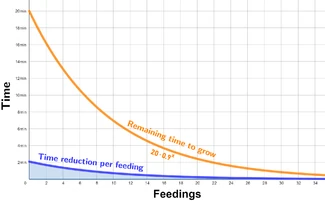



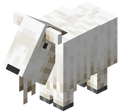

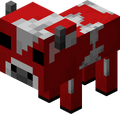




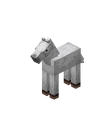
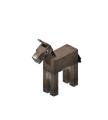
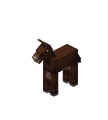




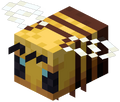



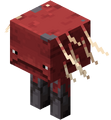
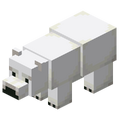

![Dolphin calf[Bedrock Edition only]](https://static.wikia.nocookie.net/minecraft_gamepedia/images/0/0b/Dolphin.png/revision/latest/scale-to-width-down/120?cb=20180411164150)
![Baby glow squid[Bedrock Edition only]](https://static.wikia.nocookie.net/minecraft_gamepedia/images/0/0c/Glow_Squid_BE1.gif/revision/latest/scale-to-width-down/116?cb=20210211213504)
![Baby squid[Bedrock Edition only]](https://static.wikia.nocookie.net/minecraft_gamepedia/images/c/ce/Squid.gif/revision/latest/scale-to-width-down/116?cb=20240729213351)
